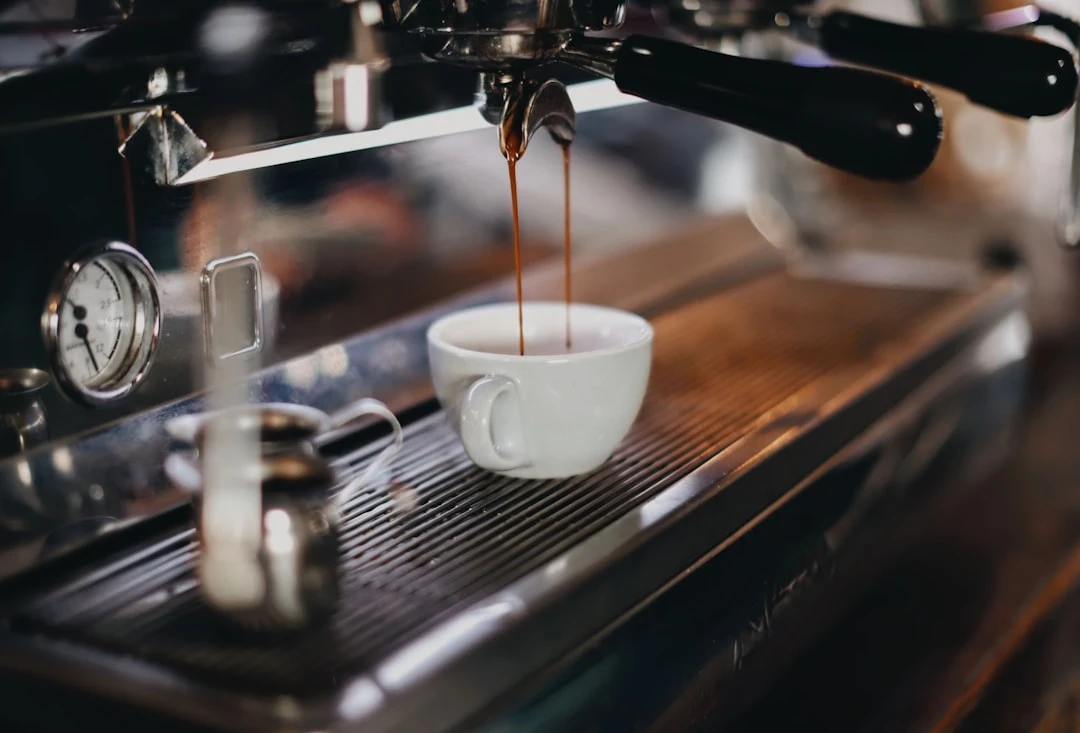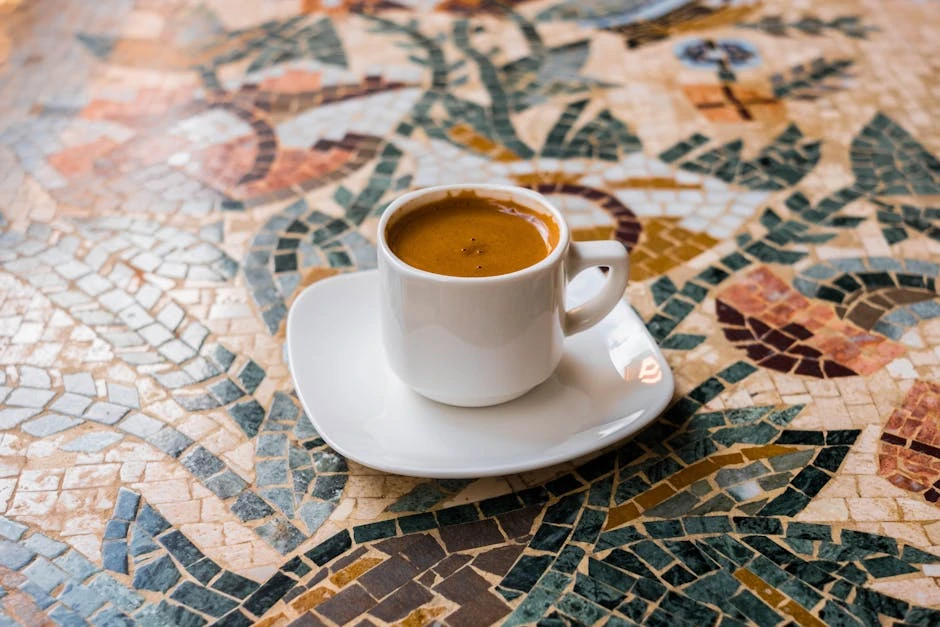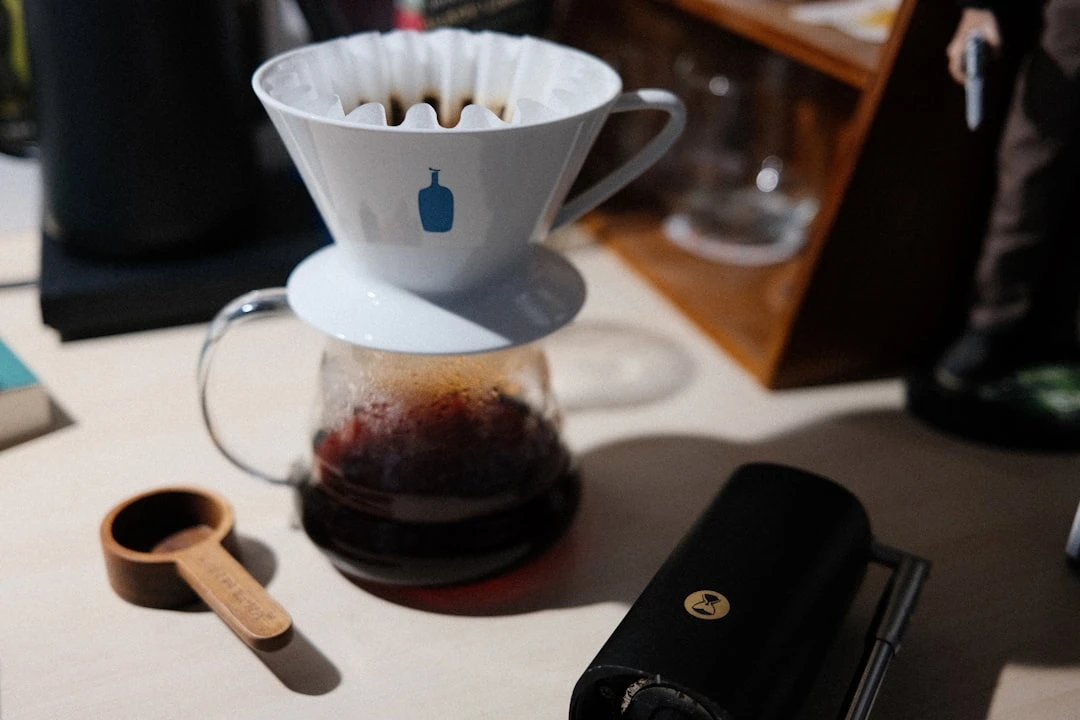The Ultimate Guide to Espresso Grind Size: How Fine Should You Really Go?
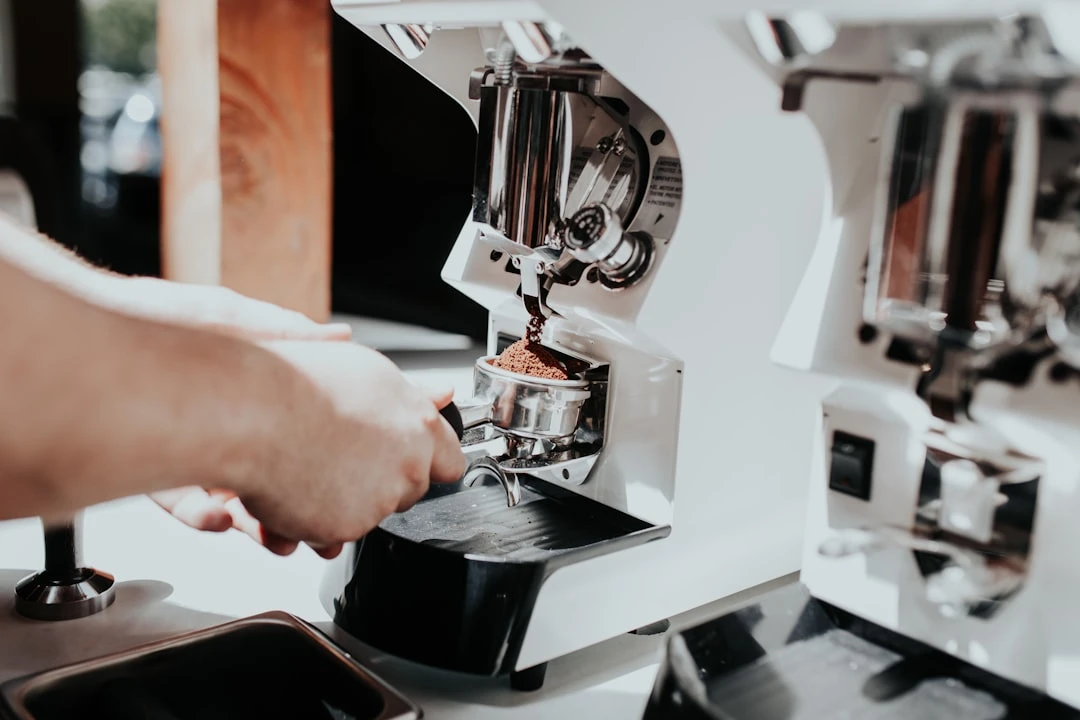
Here's a sobering fact that'll make you rethink everything: 70% of home baristas struggle with getting their espresso grind size right, and I was definitely part of that statistic for way too long! I remember spending my first month with a new espresso machine pulling shots that tasted like bitter mud or sour water, wondering if I'd wasted my money on expensive equipment.
The thing is, espresso grind size isn't just some fancy coffee geek obsession – it's literally the difference between a transcendent morning ritual and a disappointing waste of good beans. I learned this the hard way after burning through pounds of premium coffee, getting increasingly frustrated with my inconsistent results.
In this guide, I'm gonna walk you through everything I wish someone had told me when I started this journey. We'll cover the science behind why grind size matters so much, how to actually dial in your perfect setting, and most importantly, how to troubleshoot when things go wrong. Trust me, once you nail this fundamental skill, your espresso game will never be the same!
What Makes Espresso Grind Size So Critical?
Man, I wish I'd understood this concept earlier because it would've saved me so much heartache! The relationship between grind size and extraction is like a perfectly choreographed dance – mess up one part, and the whole performance falls apart.
When you grind coffee beans, you're essentially creating more surface area for hot water to interact with. Think about it this way: if you had a whole coffee bean and tried to extract flavor from it, you'd get basically nothing because the water can only touch the outside. But when you grind that bean into thousands of tiny particles, suddenly you've got exponentially more surface area working for you.
Here's where it gets tricky with espresso, though. Unlike drip coffee or French press, espresso forces water through the coffee grounds under intense pressure – we're talking about 9 bars of pressure, which is roughly 130 pounds per square inch! This means the water doesn't have much time to extract flavors, so we need to compensate by grinding much finer than other brewing methods.
I learned this lesson when I first tried using my regular drip coffee grind setting for espresso. The shot literally gushed out in about 10 seconds, tasting like colored water with a hint of sadness. The grind was so coarse that the pressurized water just found the path of least resistance and rushed right through, barely extracting anything worthwhile.
The sweet spot for espresso is finding that Goldilocks zone where the grind is fine enough to slow down the water and extract those beautiful flavors, but not so fine that it creates a brick wall the water can't penetrate. When you get it right, you'll see that perfect honey-like flow from your portafilter, and the resulting shot will have layers of flavor complexity that'll make you understand why people get obsessed with this stuff.
Surface area is king in espresso extraction, but consistency matters just as much. Even if you've got the right overall fineness, if some particles are huge and others are powder, you'll get uneven extraction that tastes muddy and confused.
How Fine Should Your Espresso Grind Actually Be?
Okay, let's get practical here because I know you're probably staring at your grinder wondering what the heck "fine" actually means. I've been there, reading forum posts talking about grind size like it's some mystical art form that only coffee wizards can understand.
The texture you're aiming for should feel like table salt – maybe slightly finer, but not quite powdery like flour. When I first started, I made the mistake of going way too fine because I thought "finer must be better," right? Wrong! I ended up with what basically amounted to coffee dust that clogged my machine and produced shots that took forever to extract.
Here's a simple test I use that's way more reliable than trying to eyeball it: grab a pinch of your ground coffee between your thumb and index finger. If it feels gritty and you can clearly distinguish individual particles, you're probably too coarse. If it feels smooth and powdery like cocoa powder, you've gone too far in the other direction. The sweet spot feels slightly gritty but cohesive – kind of like fine sea salt mixed with a tiny bit of flour.
Different grinders will have different settings for achieving this texture, which honestly drove me crazy when I first started. My entry-level burr grinder's "espresso" setting was actually way too coarse for my machine, so I had to go several clicks finer than what the manufacturer recommended. Don't trust the labels blindly – trust your taste buds and extraction timing instead.
Water quality plays a bigger role than most people realize, too. I live in an area with relatively soft water, which means I can get away with a slightly coarser grind than someone dealing with hard water. The minerals in your water affect how the coffee extracts, so you might need to adjust accordingly. I figured this out when I moved apartments and suddenly my perfectly dialed-in grind setting stopped working!
Your espresso machine also influences the ideal grind size. Higher-end machines with more consistent pressure might work better with a slightly different grind than entry-level machines with more variable pressure profiles. It's all about finding what works for your specific setup through experimentation.
Common Espresso Grind Size Mistakes (And How I Fixed Them)
Let me tell you about my biggest grinding disasters because chances are, you're gonna make some of these same mistakes. The good news? They're all totally fixable once you know what to look for!
My first major screw-up was what I now call "the choking incident." I'd read somewhere that espresso should be ground "super fine," so I cranked my grinder to its finest setting and tried to pull a shot. The result? Absolutely nothing came out of my portafilter for about 30 seconds, then a few drops of over-extracted bitterness that tasted like someone had dissolved an aspirin in coffee. I'd essentially created a coffee brick that even 9 bars of pressure couldn't penetrate properly.
The fix was humbling but simple: I backed off the grind setting by several clicks and gradually worked my way finer until I found the sweet spot. Now I always start coarser than I think I need and adjust from there. It's way easier to go finer than to recover from choking your machine.
On the flip side, I also went through what I call my "sour shot phase." This happened when I overcorrected from the choking incident and went too coarse. My shots were pulling way too fast – we're talking 15-20 seconds instead of the target 25-30 seconds – and they tasted thin, acidic, and just plain disappointing. The coffee was under-extracted because the water was rushing through too quickly to grab all those delicious flavors.
Inconsistent grinding was another nightmare that took me forever to figure out. I'd dial in what seemed like the perfect grind one day, then the next morning my shots would be completely different using the exact same settings. Turns out my cheaper grinder wasn't maintaining consistent particle size, especially as the burrs warmed up. Some grounds were perfect, others were too coarse, and some were practically powder. This inconsistency meant some parts of my coffee puck were over-extracting while others were under-extracting, creating a muddy, confused flavor profile.
The solution involved upgrading to a better grinder eventually, but in the short term, I learned to run a few beans through to "warm up" the grinder before grinding my actual shot. I also started weighing my dose more carefully and paying attention to how the grind looked in different lighting conditions.
Here's a mistake that cost me serious money: ignoring grinder calibration and maintenance. I assumed that once I found my perfect setting, it would stay perfect forever. Nope! Burrs wear down over time, coffee oils build up, and even temperature changes can affect your grind consistency. Now I recalibrate my grinder every few weeks and clean it regularly. It's like tuning a guitar – you gotta maintain it to keep getting good results.
Step-by-Step Guide to Dialing In Your Perfect Grind
Alright, let's talk about the actual process of dialing in your grind because this is where the magic happens. I'm gonna walk you through the exact method I use every time I get new beans or when something seems off with my shots.
First things first: start with a baseline. I always begin with a grind that's slightly coarser than I think I'll need. For most grinders, this is somewhere in the middle of the espresso range, but don't get hung up on specific numbers because every grinder is different. Pull a shot with this setting and time it from when you start the extraction until you've got about 2 ounces of espresso in your cup.
Here's what you're looking for: your shot should take between 25-30 seconds to pull. If it's gushing out in 15-20 seconds, you need to go finer. If it's dripping slowly and taking 40+ seconds, you need to go coarser. But here's the thing I learned the hard way – make small adjustments! When I first started, I'd make huge jumps on my grinder setting and end up swinging wildly between too fast and too slow.
The taste test is where you really dial things in. A properly extracted shot should have a balance of sweetness, acidity, and body without any harsh bitterness or sour notes dominating. If your shot tastes sour or thin, even with good timing, try going slightly finer. If it's bitter or harsh, go a touch coarser. Sometimes the timing can be perfect but the taste is off, which usually means you need micro-adjustments rather than major changes.
I keep a simple log on my phone – just the grinder setting, shot time, and a quick note about taste. This has saved me so much time because I can refer back to what worked with different beans or when I'm trying to recreate a particularly good shot. Trust me, you think you'll remember, but you won't!
Temperature and humidity affect grind behavior more than most people realize. I've noticed that on really humid days, my grind sometimes needs to be slightly coarser because the coffee particles stick together more. On dry days, I might need to go a tiny bit finer. It's subtle, but once you start paying attention, you'll notice these patterns too.
Don't get discouraged if it takes several attempts to dial in new beans. Different roast levels, origins, and even the age of your beans will require slight adjustments. I usually plan on "wasting" the first few shots when I open a new bag of beans, treating them as calibration shots rather than getting frustrated that they're not perfect right away.
Best Grinders for Consistent Espresso Results
Let me be brutally honest about grinders because this is where I made some expensive mistakes early on. I started with a blade grinder because I thought it would be "good enough" for learning. Spoiler alert: it wasn't even close to good enough, and I probably would've given up on espresso entirely if I'd stuck with it.
Blade grinders create a mess of particle sizes – some huge chunks, some powder, and everything in between. It's basically impossible to get consistent extraction with that kind of chaos. I upgraded to an entry-level burr grinder pretty quickly, and even that basic improvement was like night and day.
For budget-conscious folks just starting out, the Baratza Encore modified with the M2 burr set is actually a decent entry point. It's not perfect for espresso, but it'll get you learning without breaking the bank. I used a similar setup for about six months, and while it required more attention and adjustment than higher-end grinders, it taught me a lot about how grind size affects extraction.
The mid-range sweet spot, in my experience, is something like the Baratza Sette 270 or the Eureka Mignon series. These grinders have stepped up their game significantly and can produce genuinely good espresso. I upgraded to a Sette after my first year, and the consistency improvement was immediately noticeable. The shots became more predictable, and I spent way less time fighting with grind adjustments.
High-end grinders like the Niche Zero or commercial-grade Mahlkonig models are amazing if you've got the budget and the obsession to match. I eventually splurged on a Niche, and while it didn't magically make me a better barista, the workflow improvements and grind quality were absolutely worth it for someone pulling multiple shots daily.
Here's what I learned about the burr versus blade reality: burr grinders crush beans between two surfaces, creating more uniform particle size. Blade grinders basically beat the beans to death with spinning blades, creating inconsistent results no matter how careful you are with timing. If you're serious about espresso, skip the blade grinder phase entirely and start with at least an entry-level burr grinder.
Grinder retention is something I didn't understand initially but now consider crucial. Some grinders hold onto ground coffee in various nooks and crannies, which means you're getting a mix of fresh and stale grounds in each dose. Single-dose grinders that minimize retention have become my preference because you know exactly what you're getting with each shot.
Troubleshooting Your Espresso Grind Size Issues
Let's troubleshoot the most common problems you'll run into, because I guarantee you're gonna face at least a few of these headaches. The good news is that once you understand what's causing each issue, the fixes are usually pretty straightforward.
Shots pulling too fast is probably the most common beginner problem. If your espresso is gushing out like a faucet and you're getting 2 ounces in 15 seconds or less, your grind is definitely too coarse. The water is finding easy paths through the coffee puck and not spending enough time extracting flavors. The result tastes thin, sour, and disappointing – like coffee-flavored water.
The fix is simple: grind finer, but do it gradually. Make small adjustments – maybe 2-3 clicks on your grinder – and test again. I used to make huge jumps and end up overshooting in the other direction, which just created more problems. Also, make sure you're distributing and tamping consistently, because uneven puck preparation can create channels that cause fast extraction even with the right grind size.
On the flip side, shots that take forever to extract usually mean you've gone too fine. If you're waiting 45+ seconds for your shot and it's dripping out painfully slowly, you've probably created a coffee brick that your machine can barely push water through. These over-extracted shots taste bitter, harsh, and often have an unpleasant astringent quality that makes your mouth feel dry.
Back off your grind setting by several clicks and try again. I learned to be more aggressive about coarsening when dealing with slow shots because the difference between "too fine" and "just right" can be pretty dramatic. Also, check that you're not over-dosing your portafilter or tamping with excessive pressure, both of which can compound grind-related flow issues.
Bitter, over-extracted shots are tricky because they can be caused by grind size, but also by other factors like water temperature or contact time. If your timing is good (25-30 seconds) but the shot still tastes harsh and bitter, try going slightly coarser. Sometimes the grind is technically fine enough to get good timing, but it's still extracting too much of the bitter compounds.
Sour, under-extracted shots with good timing usually mean you need to go finer, but sometimes it's about dose or distribution instead. I've had shots that pulled in perfect timing but tasted sour because the water wasn't making even contact with all the coffee. Try increasing your dose slightly or improving your puck preparation before making grind adjustments.
Here's a weird one that frustrated me for weeks: shots that start normal but then speed up dramatically toward the end. This usually means your grind has some inconsistency – probably too many fine particles that create resistance initially, but then channels form and the water finds easy paths. The solution is usually better grind consistency, which might mean upgrading your grinder or at least cleaning and calibrating it properly.
Conclusion
Getting your espresso grind size right is honestly one of those skills that seems intimidating at first but becomes second nature once you understand the basics. The key thing to remember is that every variable in your setup – your grinder, your machine, your beans, even your water – affects what grind size will work best for you.
Don't get discouraged if it takes some time to dial things in perfectly. I probably pulled hundreds of mediocre shots before I really understood how all these factors work together. The important thing is to make small, deliberate adjustments and pay attention to how each change affects your results.
Remember to keep your grinder clean and properly calibrated, because even the perfect grind size won't help if your equipment isn't maintained. And please, please don't be afraid to experiment based on your specific situation – what works perfectly for me might need tweaking for your setup.
Related Articles
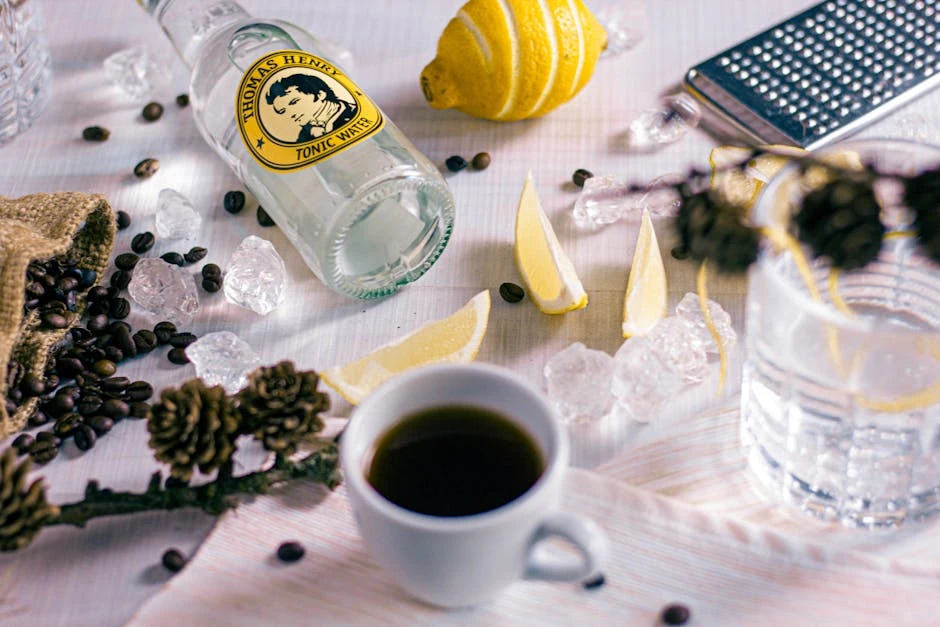
Easy Espresso Tonic Recipe: Make This Trendy Iced Coffee Drink in 5 Minutes
Read More →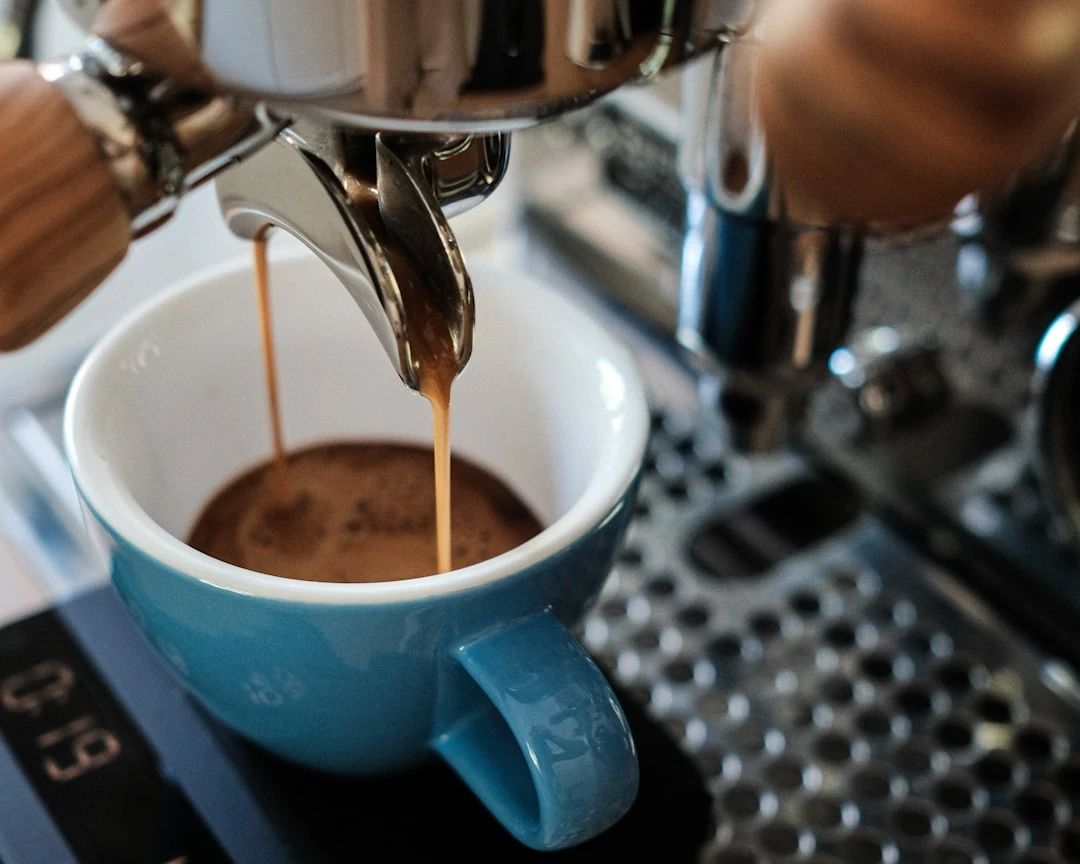
Espresso Doppio: The Double Shot Guide That'll Change Your Coffee Game Forever
Read More →